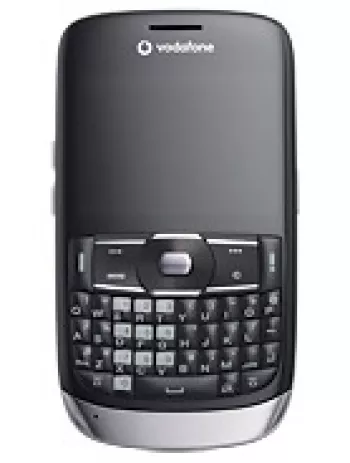
Design and Build
The Vodafone 553 is a blend of style and functionality. With dimensions of 108 x 53 x 14.9 mm and weighing 119 g, it is compact and easy to carry. Its design includes a QWERTY keyboard which was a distinct advantage for users who prefer physical keys over touch-based typing. The phone is available in a variety of appealing colors such as white, black, pink, and silver, allowing users to pick one according to their personal taste.
Display
The device features a 2.8-inch TFT resistive touchscreen display with a resolution of 240 x 320 pixels. With around 256K colors, the screen delivers decent visuals considering the era it was launched in. Although the screen-to-body ratio stands at approximately 42.4%, the tactile feedback of the resistive touchscreen aimed to enhance user interaction.
Camera
The Vodafone 553 is equipped with a single 2 MP camera. While basic by today's standards, it provided functional photography and video capabilities for users of the time. The camera allowed users to capture important moments with reasonable clarity and ease.
Memory and Storage
Internally, the Vodafone 553 offers 50 MB of storage, which could be expanded via a microSDHC slot. This expansion feature was particularly beneficial for users looking to store more media and applications. Additionally, the phonebook capacity to store 1000 contacts and practically unlimited call records was impressive.
Network and Connectivity
The Vodafone 553 is a dual-band GSM device supporting GSM 900 / 1800 networks, ensuring solid connectivity across many regions. For data, the phone uses GPRS and EDGE technologies (Class 12), making internet browsing via the WAP 2.0/xHTML and HTML browsers feasible. While it lacks WLAN, it supports Bluetooth 2.0 with A2DP for wireless data transfer.
Sound
The phone is equipped with a loudspeaker for media playback and hands-free operation. However, it does not include a 3.5mm headphone jack, which may require users to seek alternate solutions for personal listening experiences.
Additional Features
Vodafone 553 packs several other features such as messaging options (SMS, MMS, Email, IM) and support for Java applications (MIDP 2.0), broadening the scope for using basic applications and playing games. The phone includes an FM radio feature, providing users an additional media source.
Battery Life
The device is powered by a removable Li-Ion 900 mAh battery. It offers a standby time of up to 384 hours and a talk time of about 5 hours and 20 minutes, adequate for moderate usage during that time period.
Conclusion
In conclusion, the Vodafone 553 is a mid-range feature phone that managed to stand out due to its QWERTY keyboard and compact design. While it may not meet modern smartphone standards, it was a reliable device in its category at the time of release. During an era where feature phones were still widely used, it provided a suitable balance between cost, functionality, and style.
Key Features of Vodafone 553
- Compact Design: Dimensions of 108 x 53 x 14.9 mm and weight of 119 g make it portable and easy to handle.
- QWERTY Keyboard: Provides a tactile typing experience for easy messaging and navigation.
- TFT Resistive Touchscreen: 2.8 inches with 256K colors for a decent display experience.
- Expandable Storage: Supports microSDHC card slot for additional storage space.
- Connectivity Features: Includes Bluetooth 2.0 with A2DP, FM radio, and USB 2.0 support.
- 2 MP Camera: Basic camera for taking photos and videos.
- Long Stand-by Time: Removable Li-Ion 900 mAh battery offering up to 384 hours of standby time.
- Multimedia and Messaging: Supports SMS, MMS, Email, IM, and Java for games and applications.
- Available in Various Colors: Choose from White, Black, Pink, and Silver.
Vodafone 553 Disadvantages
- Lacks 3G and 4G support (only GSM technology).
- Discontinued status, making support and repairs difficult.
- Uses a resistive touchscreen, which is less responsive compared to modern capacitive screens.
- Low screen resolution and density (~143 ppi).
- Limited internal storage of 50MB, requiring dependency on microSDHC for additional storage.
- Basic 2 MP camera, lacking advanced features for modern photography.
- No front (selfie) camera.
- Absence of 3.5mm headphone jack.
- Does not support WLAN, limiting internet connectivity options.
- No GPS positioning available.
- Lacks modern sensors found in contemporary smartphones.
- Low battery capacity (900 mAh) resulting in short battery life.


View Also
More Phones
All Rights Reserved +13916 Phones © Mobilawy 2025

























